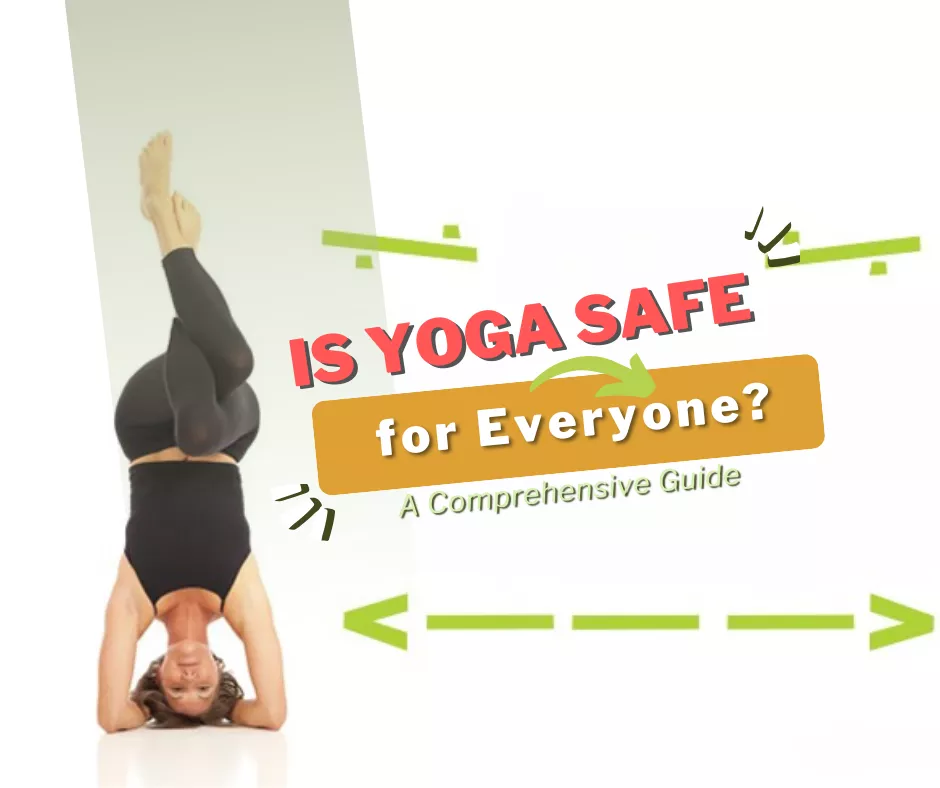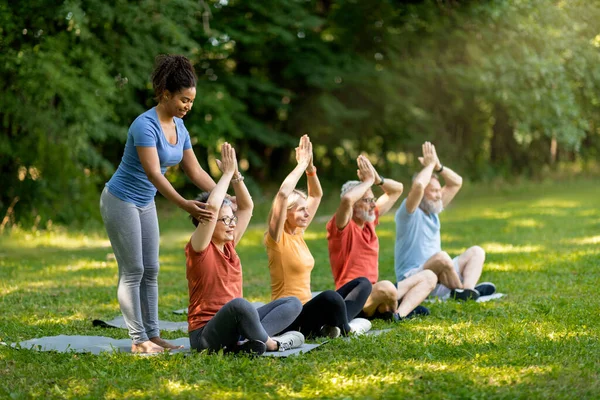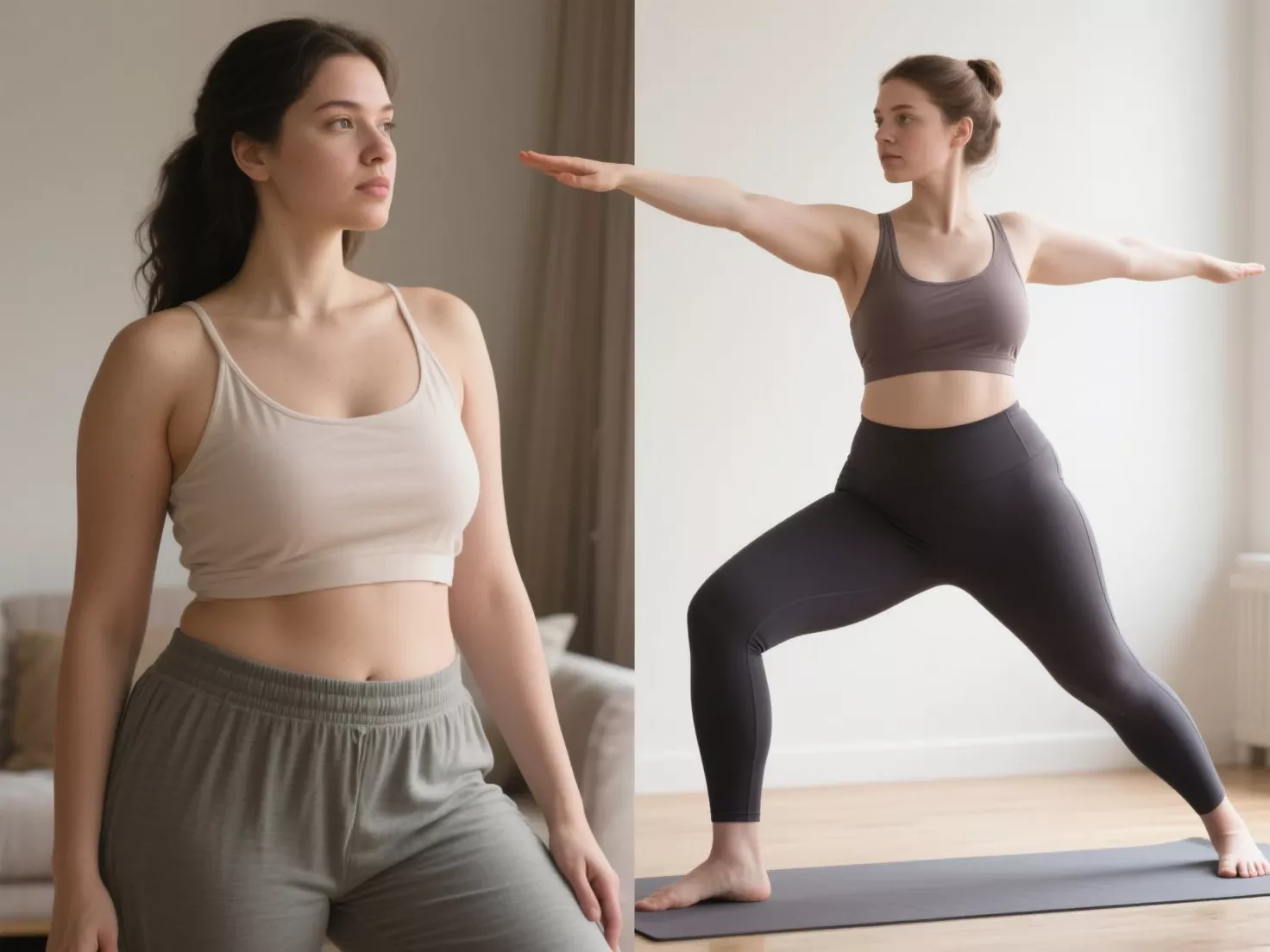Yoga is often celebrated as a practice that is inclusive, accessible, and adaptable to all. However, the question “Is yoga safe for everyone?”
is an important one to address, as safety in yoga depends on several factors, including an individual’s health condition, physical fitness level, and the approach they take to the practice.

Here’s a deep dive into this topic to help you better understand yoga’s safety and how to practice it mindfully.
The Universal Appeal of Yoga
Yoga is an ancient discipline designed to connect the mind, body, and spirit. Its wide variety of styles—from slow, restorative practices to dynamic, high-intensity flows—means that yoga can be tailored to suit people of all ages, fitness levels, and physical conditions.
That said, while yoga is generally considered safe and beneficial, there are important considerations to ensure it is practiced in a way that minimizes risk and maximizes rewards.
Who Can Practice Yoga?
For most individuals, yoga is safe when performed correctly and under appropriate guidance.

Here’s an overview of how yoga applies to different groups:
1. Beginners or Inactive Individuals
- Yoga is an excellent option for those who are new to exercise or have been inactive for a while.
Gentle styles like Hatha Yoga, Yin Yoga, or Restorative Yoga provide a low-impact way to reintroduce movement to the body. - Safety Tip: Beginners should focus on learning proper alignment and technique in foundational poses to avoid unnecessary strain or injury.
Always start slow and gradually increase intensity.
2. Seniors
- Yoga is particularly beneficial for older adults as it helps improve balance, flexibility, and joint mobility while reducing the risk of falls.
Styles like Chair Yoga or Gentle Yoga are designed specifically for seniors or those with limited mobility. - Safety Tip: Seniors should avoid poses that put pressure on sensitive areas, like the neck or spine.
Modifications using props (blocks, straps, or bolsters) can make poses more accessible.
3. Pregnant Women
- Prenatal yoga is a popular choice for expectant mothers, as it can help reduce stress, ease pregnancy-related discomfort, and prepare the body for labor.
- Safety Tip: Pregnant women should avoid poses that compress the belly, require lying on the back for extended periods (after the first trimester), or involve deep twisting.
Always inform your instructor if you are pregnant, and consider taking a dedicated prenatal yoga class.
4. Individuals with Chronic Conditions or Injuries
- Yoga can be highly therapeutic for managing chronic conditions such as arthritis, back pain, or hypertension.
For example, Restorative Yoga can aid in stress relief, while Iyengar Yoga emphasizes alignment and can help those recovering from injuries. - Safety Tip: Consult with your healthcare provider before starting yoga if you have a pre-existing medical condition.
Work with a certified yoga instructor experienced in adapting poses for injuries or health concerns.
5. Children and Teens
- Yoga can be a fun and healthy activity for children and teenagers, helping them develop body awareness, improve focus, and manage stress.
- Safety Tip: Classes designed for kids often use storytelling and games to make yoga engaging.
Ensure that poses are age-appropriate and not too advanced for young bodies.
When Yoga May Not Be Safe

While yoga is highly adaptable, there are certain situations where extra caution is necessary, or yoga may not be advisable at all. These include:
1. Serious Medical Conditions
- If you have a condition such as a heart problem, severe osteoporosis, or recent surgery, some poses may be unsafe for you.
- Inversions, backbends, and poses that put strain on the heart or spine should typically be avoided. Always consult your doctor first.
2. Overexertion or Competitive Mindsets
- Yoga is not about pushing limits or competing with others. Overexertion—forcing yourself into a pose your body isn’t ready for—can lead to injuries, such as strained muscles, ligament tears, or joint issues.
3. Lack of Proper Guidance
- Practicing advanced poses without proper instruction can lead to injuries, especially in poses that involve balancing on your head, neck, or hands.
It’s important to learn under the guidance of a qualified instructor, particularly if you’re new to yoga.
4. Unaddressed Physical Conditions
- If you have specific health concerns (e.g., herniated discs, high blood pressure, or vertigo), certain poses may aggravate your condition.
Ensure you inform your instructor about any physical issues before class so they can offer modifications.
How to Practice Yoga Safely
To make yoga a safe and enjoyable practice, follow these key tips:
1. Choose the Right Style
- Select a yoga style that aligns with your fitness level and goals. For example, beginners might benefit from slower-paced practices like Hatha Yoga, while more active individuals may enjoy the challenge of Ashtanga or Power Yoga.
2. Listen to Your Body
- Yoga is not about perfection—it’s about progress. Avoid forcing yourself into poses that feel painful or uncomfortable. If a pose doesn’t feel right, modify it or skip it altogether.
3. Warm Up Properly
- Like any physical activity, warming up is crucial to prevent injuries. Simple stretches and gentle movements can help prepare your body for deeper poses.
4. Use Props and Modifications
- Props like yoga blocks, straps, and bolsters are not just for beginners—they’re tools to help make poses safer and more accessible.
Don’t hesitate to use them or ask your instructor for modifications.
5. Work with a Certified Instructor
- An experienced teacher can help you refine your alignment, provide modifications, and guide you safely through your practice. This is especially important for beginners or those with specific health concerns.
6. Stay Mindful
- One of yoga’s foundational principles is mindfulness. Pay attention to your breath and how your body feels in each pose.
Mindfulness not only helps prevent injuries but also deepens your connection to the practice.
The Benefits of Yoga for Most People
When practiced safely, yoga offers a myriad of benefits, including:
- Improved Flexibility and Balance: Yoga enhances joint mobility and strengthens stabilizing muscles.
- Stress Relief: Through breathwork and mindfulness, yoga helps calm the mind and reduce anxiety.
- Better Posture: Regular practice promotes body awareness, helping to correct postural imbalances.
- Increased Strength: Many yoga poses engage multiple muscle groups, building overall body strength.
Final Thoughts
So, is yoga safe for everyone? For the vast majority of people, the answer is yes—provided it is practiced mindfully and with proper guidance.
By choosing the right style, listening to your body, and making adjustments for your individual needs, yoga can be a safe and transformative practice that benefits your mind, body, and soul.
If you’re ever unsure, consult a healthcare provider or talk to a certified yoga instructor to address any concerns before starting.
With the right approach, yoga can be a lifelong practice that promotes health, wellness, and inner peace.
Namaste! 🧘♀️



